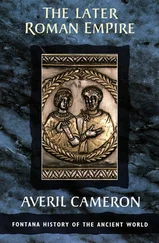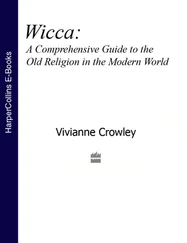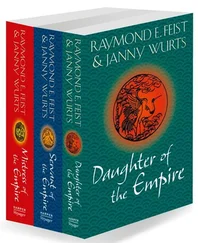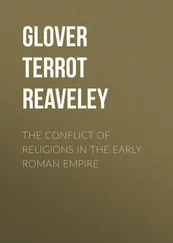Above all, the legal status ( colonia , municipium ) of the cities, which regulated the relationship with Rome, meant that, in addition to the numerous individual consecrations, the policymakers and the financially powerful persons in the cities erected new squares with temple buildings, which offered spaces for the social, religious, political and economic life and forms appropriations. They took over particular functions according to the location, purposes and facilities of the previous sanctuaries. Thus, the temple of Mercury in Gightis in the province of Africa proconsularis (Tunisia/Algeria) was rebuilt with courtyards (probably in the 1st century A.D.), but the kind of actions taking place there—market, trade and religious practices—remained the same. 70The inhabitants of Thouggha and Lambaesis continued to visit ancient sanctuaries in the 2nd and 3rd centuries A.D. and set up stelae on the ground ( tophet), while they gave other kinds of gifts—statues, inscriptions—to the gods in the new places and temples at the same time. 71It shows that the practices were often very much bound to the local ideas and religious concepts, even if a certain uniformity of the architecture (square, temple, porticoes) convey Roman influence. 72Stories about the foundation and meaning of sanctuaries and gods were also reinvented or existing ones adapted so that a particular sanctuary could again become an important place of communication among people and with the gods. The Demeter sanctuary of Eleusis in Attica and the mysteries held there saw an immense increase of institutions being interested in the place and its cult, so that it was re-designed on a larger scale: Propylea – elaborate entrance buildings – altars, but also the Telesterion as a central cult building were re-built on the initiative of the Roman elite up to the emperor in the 1st century B.C. to the 2nd century A.D. 73The city of Gergakome in Asia Minor erected a temple for a local mother goddess only in the imperial period, but chose an archaic style for it. Religion and antiquarianism went hand in hand. 74In the early imperial period an archaising style was prominent also in Rome itself, where the terracotta friezes used on the Temple of Apollo on the Palatine are one example of the Augustan focus on reviving »old« religious tradition using the materials of former cultures, in this case that of the Etruscans. 75The underlining of the importance of old traditions whether »real« or not became a renewed focus in religious architecture and even for the gods themselves. 76The god Apollo in Didyma tells us through an inscription of the 2nd century A.D. that he preferred the oldest music to be sung to him. 77Even gods came to care about the most ancient religious traditions in the Roman period. Composing and singing hymns, choruses and hymnnodies generally increased in this period, especially for the purpose of the imperial cult. 78
If, for example, one had assumed for a long time that the Capitoline Triad of Jupiter, Iuno and Minerva was exported from Rome to the cities (new or old coloniae and municipia ), today we rather see the local conditions of various elite groups striving to combine the old with the new. Such dynamics were the driving force for the creation of capitolia for Roman divine triad which often took place long after the cities had been founded or elevated to the status of colonies. An ideal type temple like the Capitolium on the arx of Cosa 79was built about 100 years after the foundation of the colonia (273 B.C.). 80A similar situation occured during the imperial period, when cities were reestablished or given a new legal status, respectively, and the cities’ elites commissioned new temples. But the temple buildings, often at fora or other squares, are not always aligned with these legal-administrative changes as for example at Cuicul/Djemila in Numidia (Algeria), which was re-founded in Flavian-Traianic times, whereas the capitolium is not built before the end of the 2nd century A.D. 81Also, there is a larger range of local variations of the buildings than the often homogenised images of the uniform, three-partite temple cellae convey, 82and they refer to predecessors or local traditions.
Thus, not every temple with three cellae can be traced back to Rome’s Capitoline temple and its direct influence. Rather, the relationships and interaction are to be seen in a more complex way. Formerly »new« gods such as the deities Isis and Serapis, who came from Ptolemaic Egypt and who have been worshipped since the 3rd century B.C. in the Mediterranean region, probably strongly bound to merchant groups and harbour cities, developed into independent deities with their own traditions at the places of worship. 83On the Aegean island of Delos, which as an important harbour and hub in the eastern Mediterranean was the home of many different people and their gods, several sanctuaries of these Egyptian gods are preserved, which take elements in form and style from Egyptian sanctuaries. Thus the long entrance pathway ( dromos) to Serapeion C is flanked by sphinxes on pedestals. In Benevento in central Italy several objects, inscriptions and sculptures with Egyptian themes or objects bearing hieroglyphs suggest that Isis and Serapis, who were already established in the area at the time the objects can be dated to, probably possessed a larger sanctuary. The people who equipped and used this shrine with the egyptianising elements were in favour of an imagined origin of Isis—far from Italy at the Nile. In Pompeii, where inhabitants as in other places in Campania adopted and practiced this cult already in the 2nd/1st century B.C., stands a secluded temple for Isis that today allows us to reconstruct ritual acts in an environment that is distinctly different from, for example, a temple on the forum. 84The temple of Isis at Pompeii is one of the many places of gods in the Roman Empire that refers to a certain region of the Empire and its traditions—often Egypt or Western Asia—but develops from the region of reference partly decoupled of cult practices. 85
To a more political context belong buildings that served the meetings of the provincial administration, the conventus , even though they also have religious functions. These large complexes are typical for the provinces of Spain and Gaul: In Tarraco/Tarragona, an originally Celtic-Punic city, the Roman governors erected the Provincial Forum of the province Hispania ( citerior ) in the Julian-Claudian period, consisting of porticoed squares stretching over two terraces. On a third, the lowest terrace, a circus was built, on the highest square lay axially a temple (Fig. 11). A similar layout of temple and square can be seen in Augusta Emerita (Mérida, Lusitania), where on its forum of the province Lusitania a temple for the deified Tiberius stood. A circus was situated just outside the town, which was certainly also used for the religious festivities on the occasion of the conventus . 86At Augusta Emerita the intertwined relations of the imperial house, the local elites and the communities of the province become evident through epigraphic, architectural and sculptural evidence: Over the course of three centuries the various religio-politicial spaces of the city reflect the negotiations of power. 87These always included a temple building, since the meetings of representatives from the municipal and provincial administrations of communities and populations ( populi ) in the province had to take place under divine protection. Likewise, decisions made at these meetings were affirmed by oaths or other sacred acts. The presence and goodwill of the gods were needed in order to confirm decisions and make them legitimate.
2.2 Villages, towns and regions: spatial-religious references and regional traditions in sanctuaries
Читать дальше












